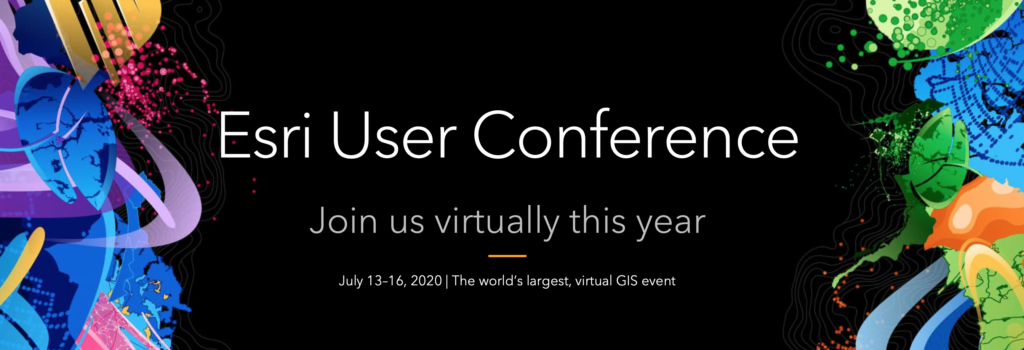Esri User Conference 2020 Highlights

Location intelligence is a key compnent of the solutions delivered to Sword clients. GIS Specialist Iwona Jakubowska shares her technical insights from the annual conference by Esri, an international supplier of geographic information system (GIS) software.
A Virtual Conference at Scale
This year’s Esri User Conference was unlike any other. Billed as an immersive, fully virtual event, it gathered thousands of GIS users from all over the world. Over 80,000 users from 180 countries registered for the event that took place between 13th and 16th July 2020.
The event was designed to enable users to actively participate in the live sessions via chats, as well as watch pre-recorded sessions on demand. Esri has since made all of the sessions available online.
There were also some challenges, mainly around search/filter functionality (finding a proper session) and obviously time difference, as the event was hosted in Redlands, CA and watched live all around the world.
ESRI’s president Jack Dangermond led the plenary session, highlighting great Esri’s achievements in the field of Covid 19 response as well as many useful GIS implementations and solutions for various industries, like GIS integration with enterprise systems, including Microsoft Office, ETL (extract, transform and load) workflows, CAD (computer-aided design) and BIM (building information modelling). He announced a new education programme partnering with the National Geographic Society. Esri continues working with the UN on their Sustainable Development Goals.
Jack also announced new features and improvement to the Esri platform. He put a lot of emphasis on deep learning and AI (artificial intelligence) techniques available in the Esri platform.
The plenary session is available on the Esri Conference website.
The following developments in particular caught my attention:
New Online Map Viewer
The new online Map Viewer was built on the latest JS (JavaScript) technology and it allows many new options of data visualisation, labelling and charting. Enhanced, more intuitive user interface makes it easier to create beautiful and meaningful maps. Cartographic blending is a new addition to the web map viewer to show the terrain texture for better understanding of the landscape.
ArcGIS Experience Builder
ArcGIS Experience Builder is an application that allows users to create multi-page web applications using both 2D and 3D data. A great selection of tools and widgets enhances the look and feel, so that applications can be customised to a higher level. Users can now create new multipage, complex sites, which wasn’t possible before. Experience Builder is now available in ArcGIS Online (AGOL) and is soon coming to ArcGIS Enterprise.
Esri Notebook
Esri Notebooks are now available across the platform, from AGOL, through Enterprise to Desktop. There has been a Notebooks manager and admin API (application planning interface) added recently, that enables to create a custom template for your Notebooks. Multiple charts options are now available as well as a scheduler for automated tasks.
Python API enables administrators, publishers, analysts and data scientists to script and automate their workflows. All Python functionality is available through ArcGIS Notebooks. The ArcGIS Pro Python environment can also be extended with open-source libraries.
ArcGIS Analytics for IoT
ArcGIS Analytics for IoT (internet of things) is a new real-time and big data processing and analysis capability in ArcGIS Online platform (an extension). It enables users to ingest, store, visualise and analyse data from IoT sensors. It allows to connect to almost any type of streaming data, perform real-time analytics and processing on the streaming data, and automatically disseminate information. It also enables users to design analytic models to process high-volume historical data in order to gain insights into patterns, trends, and anomalies in the big data.
In Esri terms: ArcGIS Analytics for IoT = (GeoEvent + GeoAnalytics) in the cloud
3D Voxel layer
Voxel layer is a new data type introduced in the latest ArcGIS Pro release (2.5). Voxels are 3-dimentional cubes that can store various information. They allow you to visualise and explore multidimensional phenomena. You can now can easily create a cross section and slice through the voxel volume to investigate the distribution of the values in your data. Using transparency, you can focus on the most important information. You can also add fourth dimension, time, for better understanding the given phenomena (e.g. temperature). This video from Esri gives a great overview.
Summary
The conference brought together a host of insights into developments of Esri’s products and solutions and we’re really looking forward to bringing the benefits of these developments to Sword clients.
For more information about our information and data management please read more here.